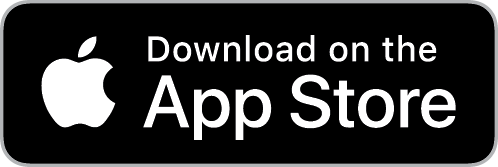Business Management - Higher
Online Lessons for Students in Scotland learning Higher Business Management
- Understanding Business
- Management of Marketing
- Management of Operations
- Management of People
- Management of Finance
Learn about the role of a business in satisfying customers’ needs and wants.
You will be taught about the different sectors businesses operate in including private, public and third sectors of the economy and in primary, secondary, and tertiary sectors of industry.
A look at three different kinds of businesses – sole traders, partnerships and limited liability companies.
In this lesson you will learn how different types of organisations have different advantages and disadvantages. You will be taught why these must be considered when owners decide on which form their organisation should take.
Learn about business objectives – the specific, measurable results that companies hope to maintain as their organisation grows.
In this lesson learn why businesses have different objectives that are linked directly to the ambitions of the business. You will be taught that these objectives are influenced by the size of the business and its ownership.
Learn how business growth has potential benefits and drawbacks. You will learn that some owners are reluctant to take the risk of growing the business and opt to stay small. Any business growth will need to be funded.
In this lesson learn about the different methods of business growth including organic growth, horizontal integration & vertical integration.
Learn how businesses can be influenced and affected by internal factors as well as external factors.
In the lesson learn about the external factors affecting businesses – political, economic, social, technological, environmental and competitive – which are represented by the acronym PESTEC.
Learn about stakeholders – parties that have an interest in a company and can either affect or be affected by the business.
In this lesson learn why businesses have different types of internal and external stakeholders, with different interests and priorities. You will be taught that sometimes these interests can conflict.
Learn that when hiring large numbers of staff, organisation is important. Everyone within the company needs to understand their role in the business structure.
Learn about the need for a business to identify its target market or market segment in order to tailor their product effectively to the consumer.
In this lesson learn that businesses can be market-led or product-led. You will be taught about the different strategies which are used to target habitual, informed and impulsive consumer behaviour.
In this lesson learn why businesses want to understand the decision-making process of the customer. You will be taught about the different types of consumer behaviour.
Learn about why businesses use market research to identify customers’ needs and wants.
In this lesson learn about the different methods of market research. You will be taught that each method has advantages and disadvantages for a business.
In this lesson you learn about the methods of desk research which don’t require the researcher to move from one place to another. You will also be taught about field research, which requires the researcher to get totally involved with the data collection process.
Learn about product the most important ‘P’ of the marketing mix.
In this lesson you will be taught that all products go through a life cycle of development, introduction, growth, maturity and decline.
In this lesson learn about the Boston Matrix, a model which helps businesses analyse their portfolio of businesses and brands. The Boston Matrix is a popular tool used in marketing and business strategy.
Learn about price, which is an element of the marketing mix. Price is crucial to a product’s success as it must be appropriate for targeted customers.
In this lesson you will learn about the importance of pricing strategy and why it should reflect a product’s positioning in the market. You will also be taught that the resulting price should cover the cost per item and the profit margin.
Learn about place, which is an element in the marketing mix. Place refers to the geographical location in which the company sells its products and provides its services
In this lesson learn about channels of distribution which are channels of businesses or intermediaries which a product or service travels through before reaching the final customer. You will be taught about the different channels which include wholesalers, distributors, retailers, and online stores.
In this lesson you will learn about the channel of distribution which is the way in which the product gets from the manufacturer to the consumer.
In this lesson you will learn about direct selling which is when the product goes directly from the manufacturer to the consumer. You will be taught about the different methods of direct selling including mail order, e-commerce, direct mail and personal selling.
Learn about promotion which is an element in the marketing mix. Promotion in the marketing mix refers to the communication that aims at promoting a product, activity, or a brand among the target customers.
In this lesson learn about out-of-the-pipeline promotions, which are promotions aimed at customers. You will be taught about the different methods used.
In this lesson learn about public relations (PR) which a promotional technique used to gain media coverage. You will be taught about the different methods used including events and newsworthy stories.
Learn about one of the essential elements of the marketing mix – people. This includes everyone who is involved in the product or service whether directly or indirectly.
Learn about process which is an element of the marketing mix.
In this lesson learn the systems and procedures that are put in place to deliver a product or service to the customer.
Learn about physical evidence which is an element of the marketing mix.
In this lesson learn about physical evidence – the physical environment experienced by the customer.
Learn about how many new technologies have entered the world of work which have had a significant impact on business.
In this lesson you will learn about how businesses can use technology to obtain, store and analyse information about their customers.
Learn about operations management – the administration of business practices to create the highest level of efficiency possible within an organisation.
Learn about the processes a business uses to manage its inventory levels and the issues associated.
In this lesson learn about inventory management, which includes several different factors such as controlling and overseeing purchases from suppliers and customers, maintaining the storage of stock, controlling the amount of product for sale and order fulfilment.
In this lesson learn about just in time (JIT). You will be taught inventory control systems that occur when a business holds no stock and instead relies upon deliveries of raw materials and components to arrive exactly when they are needed.
In this lesson you will learn about inventory storage and warehousing. You will be taught why businesses need to decide on the best way to store inventory to make it easily accessible, cost effective and well-maintained.
Learn about methods of production – all production operations combine the two factors of labour and capital.
In this lesson learn about the different methods of production – labour and capital intensive. You will be taught the importance of labour and capital to a specific business described in terms of their intensity.
Learn why quality is vital for any business.
In this lesson learn about the different ways of ensuring quality in production. You will be taught about managing the production process to make sure that all products meet consistent standards.
Learn about ethical, environmental, economic and global issues in business.
Businesses can choose to work in a way that profits only the owners or in ways that benefit the community. Working ethically means acting in ways that are both fair and honest. Ethical businesses try to keep the impact of their operations on the environment to a minimum.
In this lesson learn about the use of technology in operation management which ensures that organisations are able to reduce the cost, improve the delivery process, standardise and improve quality and focus on customisation, thereby creating value for customers.
Learn about people management – the process of training, motivating and directing employees to optimise workplace productivity and promote professional growth.
In this lesson learn why organisations draw up workforce plans to identify their future staffing requirements.
In this lesson learn about recruitment, which is the process of finding people to work for a company. You will also be taught about selection, which refers to the methods used to choose the best or most suitable candidate for a vacancy.
Learn why it is important that businesses invest in training and development to enhance staff skills. You will be taught that the type of training offered can have different costs and benefits to an organisation.
In this lesson you will learn the different ways to train staff and the costs and benefits of each method. You will also be taught about appraisals, which help motivate staff and improve staff retention.
Learn what companies can do to motivate employees to do a better job.
In this lesson learn about incentives that employers can use such as increased pay or improved working conditions to motivate employees to do a better job. You will be taught about motivational theories to suggest ways to encourage employees to work harder.
Learn how and why employment legislation has a direct effect on the day-to-day running of a business.
In this lesson learn why businesses need to ensure they are following the rules and regulations outlined in current employment legislation. Employment legislation has a direct effect on the day-to-day running of a business.
Learn about technology in the human resource (HR) department.
In this lesson learn how technology has changed the way HR departments contact employees, store files and analyse employee performance.
Learn about financial management – the strategic planning, organising, directing, and controlling of financial undertakings in an organisation or an institute.
Learn why businesses need to choose appropriate ways to finance their operations.
In this lesson learn that is important that businesses choose the most suitable type of finance for their needs. Finance can be short- or long-term.
Learn that businesses need to manage their cash flow to enable them to operate effectively.
In this lesson learn that it is important to be able to interpret a cash budget and justify suitable solutions to cash flow problems.
A business keeps various types of financial records to monitor its performance and ensure that taxes are paid. Learn who is interested in this information and why.
In this lesson you will learn about the many groups of people interested in the published accounts of a company. You will be taught how the information provided may influence future decisions.
Learn why Businesses need to choose appropriate ways to finance their operations.
In this lesson learn that is important that businesses choose the most suitable type of finance for their needs. Finance can be short- or long- term.
Learn that Businesses need to manage their cash flow to enable them to operate effectively.
In this lesson learn that it is important to be able to interpret a cash budget and justify suitable solutions to cash flow problems.
A business keeps various types of financial records to monitor its performance and ensure that taxes are paid. Learn about who is interested in this information and why.
In this lesson you will learn about the many groups of people interested in the published accounts of a company. You will be taught about how such information they provide may influence future decisions.
Learn about ratio analysis, which helps to compare a firm’s performance or different organisations’ performance over a number of years.
It is sometimes hard to compare different organisations’ performance, or even the same firm’s performance over the years. One method used by businesses to compare their performance is ratio analysis. In this lesson learn about the different types of ratio analysis.
Learn about technology in the finance department.
In this lesson learn how technology, such as spreadsheets and BACS payments, is used in many different ways to improve finance systems.


"It's bright and colourful, easy to read, and extremely easy to use unlike most textbooks or online learning websites" Daisy, S3 PupilSign Up & Learn Today

